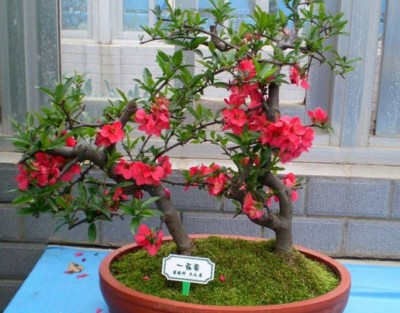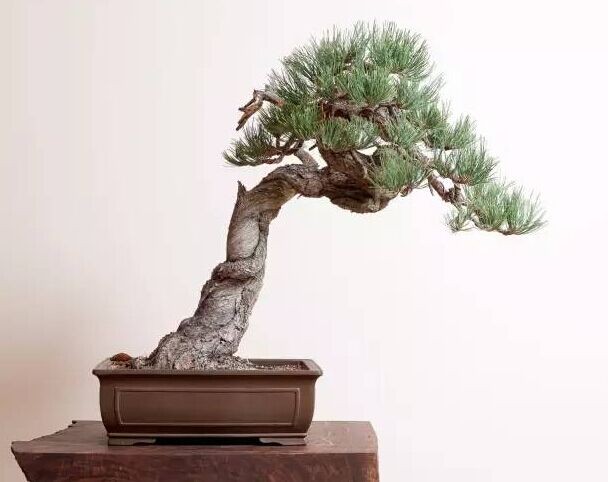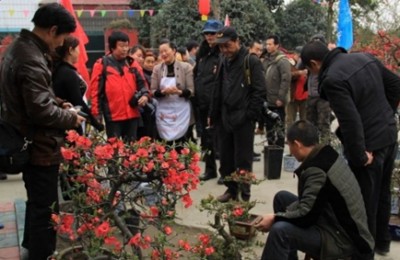Seedling raising technique of Begonia bonsai
Beautiful Begonia is a deciduous tree. The tree is compact and brownish red, with pink flowers. Mainly ornamental plants. After falling flowers, purple petals are everywhere, colorful and gorgeous.

This variety has luxuriant flowers, early fruit coloring, fruit viewing in summer, cold resistance and disease resistance, and can be widely used in garden design. It is one of the best varieties of modern ornamental apples in Beijing and is very suitable for dry northern environment in China. Suitable for solitary planting or in rocks, water planting, fruit small dense, crystal lovely, long fruit period. It is a famous ornamental tree species in northern China. In the royal garden often with magnolia, peony, osmanthus matching plants, take "Yutang wealth" artistic conception. Begonia flowers planted on both sides of sidewalks, around pavilions, jungle edges, waterfront poolside, etc. Begonia flower has strong resistance to sulfur dioxide, urban street green space and Kuangqu greening.
Begonia potted landscape to seed and grafting propagation mainly, but also can be root cutting, sub-plant or layering propagation. Sown seedlings bloom late, generally take seven or eight years to bloom, and can not maintain the excellent characteristics of the original varieties, so usually grafting propagation. Grafting mostly takes the seedling of wild begonia (Malus hupehensis) or Vitex chinensis as rootstock, and the grafting is carried out in March.
For bonsai grafting, as far as possible to connect lower as well. Select excellent varieties of scions, grow healthy and full annual branches, take the middle section with 2 full buds, such as scions taken before grafting temporarily unused, can be buried in wet sand.
Cut the scion at the position 3 - 5cm away from the ground part of the rootstock, gently cut upwards from one side of the cutting opening, then cut downwards 1.5cm with xylem from the cambium of the inclined part of the shoulder opening, vertically cut downwards, and do not skew, then vertically cut 2cm with xylem on one side of the lower part of the scion, cut a steep inclined incision on the opposite side, insert the scion into the incision of the rootstock, so that the cambium of the rootstock and the scion are tightly connected, and the joint is firmly bound by plastic film strips. Water the roots thoroughly and give shade.
This grafting method has a high survival rate and the joint is easy to heal. After joining, new branches are taken out and managed properly. They can reach 80~100 cm in that year. In winter, the top is cut off and 3~5 main branches are left to promote branching.
In the winter of the second year, the top of the main branch will be cut off to form the backbone branch, which can form a neat tree shape, which is conducive to flowering. Bud grafting was carried out in June to July, and the survival rate was also high. Root cutting propagation in spring 2~3 months, select the diameter of 1 cm within the tender roots, 6~7 cm long, inserted more than 2B3 deep, apex can be exposed to the ground, loose fertile, good drainage sandy loam is appropriate, survival is also easier. It is also possible to plant plants by using root tillers of Begonia and flower earlier.
Time: 2019-06-13 Click:
- Prev

Modeling techniques of Sabina vulgaris bonsai
Tapping and shelling are important techniques that must be mastered in making juniper bonsai. Picking tips is actually pinching leaves. Because the young branches of Sabina vulgaris are developed from scaly leaflets, the crazy growth can be controlled by pinching off the young branches and leaves. At the same time, the tip is also the only choice to organize the ten states, standardize the tree appearance and clean the landscape.
- Next

Shaping Technology of Begonia Bonsai
Begonia is often processed by the combination of flat binding and pruning, and the processing period is from defoliation in winter to before sprouting in spring. During the period of Meiyu, the growth of new branches is more mature, and the branches are more elastic, so they are also suitable for pruning and processing. The 2-year-old and 3-year-old seedlings can be processed at this time, which is more plastic and easier to operate.
Related
- Fuxing push coffee new agricultural production and marketing class: lack of small-scale processing plants
- Jujube rice field leisure farm deep ploughing Yilan for five years to create a space for organic food and play
- Nongyu Farm-A trial of organic papaya for brave women with advanced technology
- Four points for attention in the prevention and control of diseases and insect pests of edible fungi
- How to add nutrient solution to Edible Fungi
- Is there any good way to control edible fungus mites?
- Open Inoculation Technology of Edible Fungi
- Is there any clever way to use fertilizer for edible fungus in winter?
- What agents are used to kill the pathogens of edible fungi in the mushroom shed?
- Rapid drying of Edible Fungi

